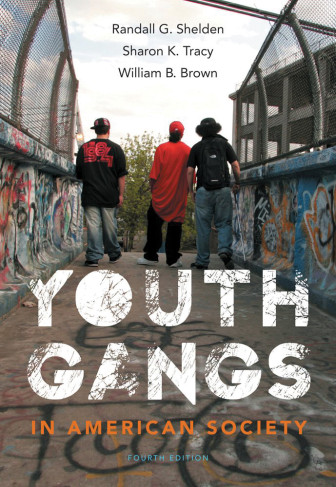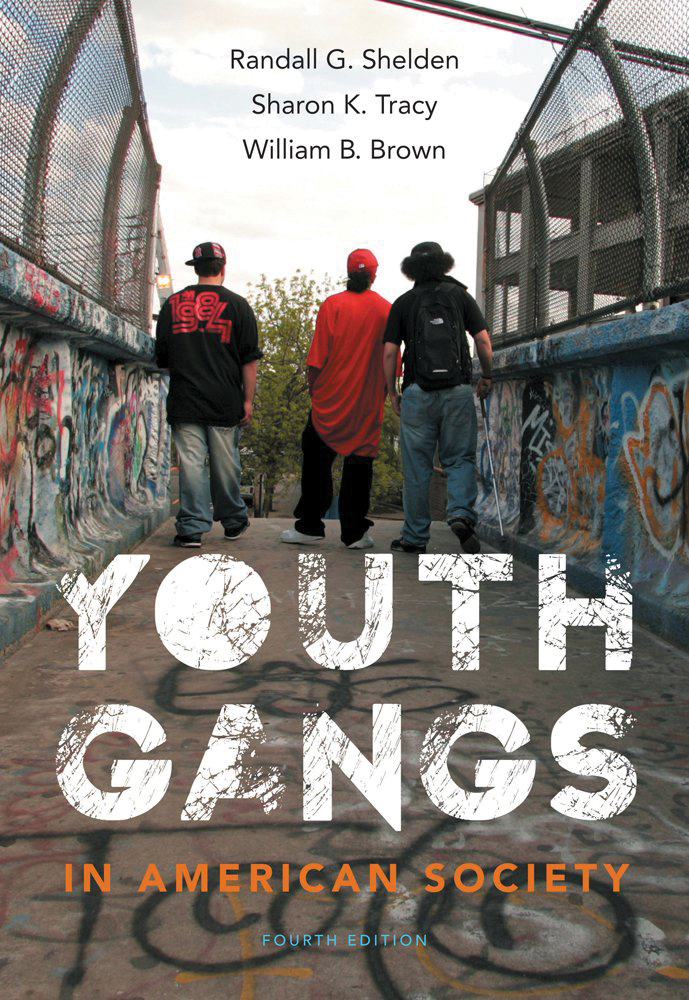 Youth Gangs in American Society
Youth Gangs in American Society
Randall G. Shelden, Sharon K. Tracy, and William B. Brown
Wadsworth, 2013
372 pages
The topic of gangs can befuddle youth workers and others who succumb to sensationalized media accounts to learn about these organizations. Did you know that gangs are not recent interventions, but existed as far back as 14th-century Europe and colonial America? Did you know that even though gang members commit crimes, they are far more likely to be victims? Did you know that drug dealing by gang members is significant but not to the extent reported in attention-grabbing news stories? Finally, did you know that even though some young people are particularly susceptible to gang membership, others are able to break away rather easily?
The authors of the fourth edition of “Youth Gangs in American Society” have updated previous editions’ content with the latest data on gangs and gang membership, including the amount of crimes they are responsible for, the prevalence of gang affiliation among youth today and involvement of girls and adults with gangs.
Shelden, Tracy and Brown recognize that writing about a topic in which the “subject cannot be precisely defined” is challenging when the “terms gang and gang member continue to be problematic concepts.” The authors answer questions about gangs and gang membership by presenting research findings that are sometimes contradictory but help readers to understand the complexity of this topic.
Without being too simplistic, what draws children, teens, girls and adults to gang life is the need for belonging, self-esteem and protection that being a member of a family provides. Young people (especially black and Hispanic) lacking supportive parents, teachers or community members, who may feel that nobody has their back, can be drawn in. Unsupervised youth with access to few after-school activities or opportunities to develop hobbies or play sports are easy pickings, too.
These risk factors are well-presented, and gang involvement is explained as community and societal problems. The authors, who have been involved in the study and teaching of the subject of crime and delinquency for more than 40 years, are “convinced that some very fundamental changes need to be made in the way we live and think before we see any significant decrease in the gang problem.”
They suggest a new paradigm to combat gangs is needed: “It has become evident that many — if not most — traditional approaches to the prevention and treatment of gangs have not fared too well. It is time to think creatively,” because blaming, labeling and incarcerating kids are not solutions. The authors write that “gangs are not strictly law enforcement problems or, for that matter, criminal justice problems. Rather, they represent a problem that needs to be addressed at both the community and societal level.”
Shelden, Tracy and Brown are especially concerned about the long-term impact of the recession that began in 2008 that in some inner cities is likened to a depression, and has pushed a large number of children into poverty by shredding safety nets previously available to support poor and minority children from federal and state programs, and school budgets. “Children will be negatively affected by the recession because it will increase the likelihood that they will be living under the poverty level, which in turn may increase the likelihood of doing poorly in school and dropping out, which can lead to crime” and increased gang involvement, they write.
The authors provide an overview of types of intervention and discuss the viability of these strategies. For instance, strategies such as youth outreach and street-work counseling in which potential gang members are identified have not proven to be successful in steering kids away from gang membership even though these are used frequently. However, job training and placement, assisting young people with school problems and targeting those most at-risk of joining gangs are successful. The authors explain why some strategies work but others don’t.
This book — organized into 11 chapters on topics such as what gangs and gang members look like, the gang subculture, criminal activities of gangs, and girls and gangs — provides a useful resource for educators, parents and youth workers looking to develop research-based ways to curtail this endemic problem.


























